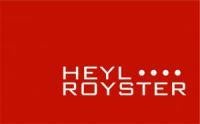Business and trade run best when there is trust, certainty, and transparency surrounding transactions. When humans traded in hunter gatherer economies or small villages, trust was enforced by social constraints or reputation. You knew who you were dealing with. When trade expanded outside villages and grew more complex, institutions developed. These institutions functioned as “neutral authorities” in which both parties to the transaction had some degree of confidence. In other words, you may not trust the person you were trading with, but you did trust that if they did not fulfil their obligation, a government, police, legal system or other “middle-man” might step in and enforce the trade. Indeed, the late Nobel laureate economist Douglass C. North wrote that these “institutions” were specifically created “to create order and reduce uncertainty in exchange.” Now, with the promise of Blockchain technology, we have the potential to enforce trust in business—without the “middle-man.”
What exactly is a Blockchain? At its core the Blockchain is a peer-to-peer decentralized database that stores a registry of assets and transactions. Think of it like “triple entry accounting.” In traditional double entry accounting, the seller enters a debit in their accounting ledger for cash received, while the buyer books a credit for cash spent for the same transaction. Each party maintains separate books, but placed side by side, the bookkeeping entries of both parties should line up. In a Blockchain, rather than the parties generating entries in separate records, the details of transaction get automatically coded into blocks of data that are cryptographically linked together with other transactions and secured over a network. The linked chain of data blocks forms an incorruptible record of all the transactions that can be replicated on every computer that uses the network. On the Blockchain, you can store not only the debits and credits of the transaction, but other information such as history of ownership and location, title, contracts, real world objects—and even personal information.
Perhaps the most currently used Blockchain technology is the virtual currency Bitcoin. However, according to a 2016 research report from Credit Suisse, there is an “increasingly consensus view” that it is Blockchain, not Bitcoin, which may disrupt institutions like law, banking, real estate, accounting, media, and intellectual property because of its three key properties: “disintermediation of trust, immutable record, and smart contracts.”
“Disintermediation of Trust”—Blockchain technology provides a more efficient and secure transaction not possible before the internet. Take the example of land title. Currently, county recorders and title companies are necessary to verify and record property data with brokers, escrow companies, appraisers, notaries and other middlemen involved in verifying a process that can be slow and tedious. With a Blockchain protocol in place, instead of a paper title, a digital title could be created—a cryptographically secure token that can be transferred as quickly and cheaply as an email. A unique and cryptographically secure “digital ownership certificate” could be created that would be virtually impossible to replicate or forge, making selling or advertising properties you don’t own almost impossible-and if you think that this is the stuff of the future, think again, because a number of countries including the Republic of Georgia, Ghana, and Honduras are already experimenting with it.
“Immutable Record”—Going back to our accounting example, because the entries in a Blockchain are distributed and cryptographically sealed, falsifying them, destroying them, altering them or concealing them is practically impossible. Instead you have a detailed audit trail without the need of a third party auditor.
“Smart Contracts”—Blockchains could allow programmers to write code creating binding contracts between individuals that are self-executing without the need of third party enforcement. The classic example envisioned by Nick Szabo was a leased car, recorded as a smart-contract on a Blockchain. If the lease payment were missed, the contract could automatically revoke the digital right to use the car. Purchase contracts could be programmed to release funds only when the goods are received in a satisfactory condition. Smart cars could automatically release funds for parking meters, not to mention for parking violations. The possibilities are limitless and depend on the coder's ability to reify legal principles into self-executing algorithms.
Perhaps, the most salient promise of Blockchain technology is the potential to return humanity back to the trust and transparency of transactions based on reputation-not mediated by third parties whose interests may not be congruent with our own. We currently purchase products-not the story behind the products. We buy our clothes from chains where people work in conditions that may be abhorrent to our sensibilities if our purchase was not mediated and kept at a distance by an opaque scheme of "middle-men." With Blockchain, you could see the whole transaction and supply chain history of how a product came to be. If you drink a cup of coffee, you can start tracing from the farmer who actually harvested the coffee beans to the person who ground it-you can see the fully story behind everything you buy. And likewise, they may be able to see us.




 />i
/>i
